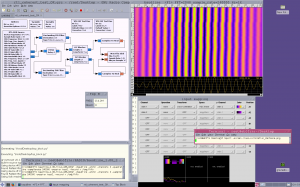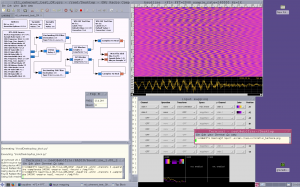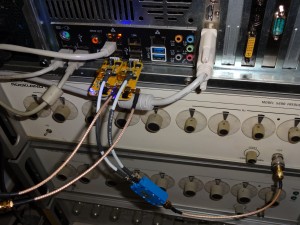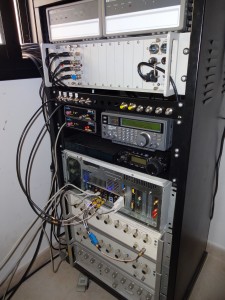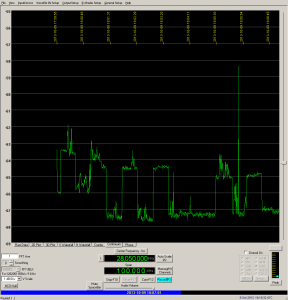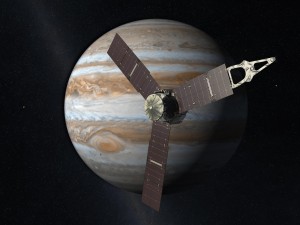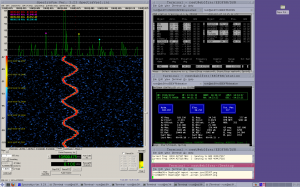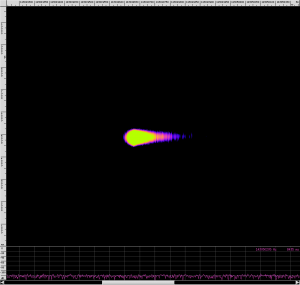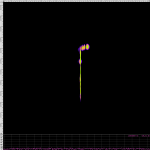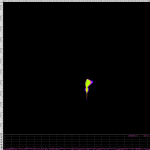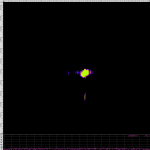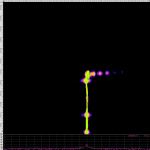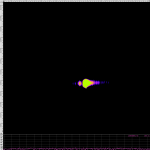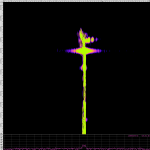The first test to see the coherence of two rtlsdr in realtime consist in do a cross-correlation of the two dongles, the cross-correlation is a measure of similarity of two signals.
To do the test I used baudline and tuned to a local VOR/DME. Here in the first picture can see some coherence of the two dongles using one antenna to every rtlsdr:
Here the result if disconnect one antenna:
